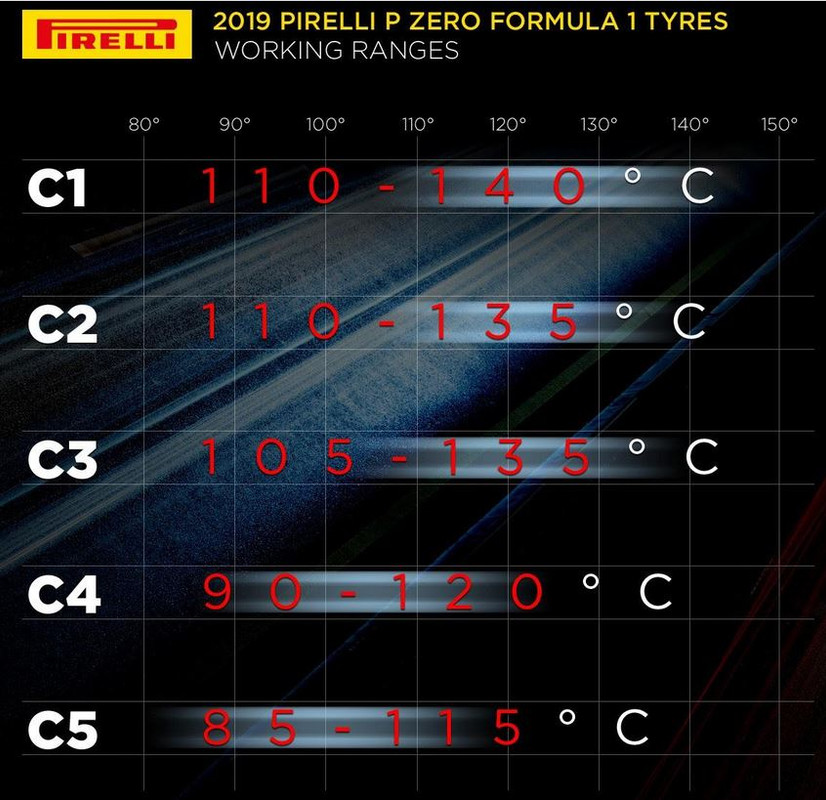ringo wrote: ↑17 May 2025, 19:18
Vasseur is probably saying that the car was not prepared for the lap properly. It went slower on newer tyres.
I think this car cannot do slow out laps. Next time they may need to be the first cars out of the pit lane and just have a empty track ahead to have a faster out lap.
Despite all of that, the rear of the car is too high and that cannot be change for a few more races.


The C6 tyre is so sticky with almost no sliding and leans to overheat towards the end of the lap, had you not correctly managed the building up temperature. This is due to the new sidewall construction for the 2025 season, which is more robust and designed to lower the thermal deg for drivers to run them harder. However, the teams are using this towards a race with longer stints and fewer stops, which is boring from the fan`s point of view.
In vehicle dynamics, this new tyre construction comes with some trade-offs. Mainly, the balance will shift rearwards, which will help a car with good DF levels, namely MCL39. Secondly, the tyre working window is reduced, penalizing cars with a smaller working window, like the Ferrari. The SF-25 just got a pattern after China. On Friday, they were among the faster cars, then on Saturday onward, they were getting slower and slower. One could say that other teams are finding a bigger chunk of time after the simulator runs on Friday night, which was the case last year with SF-24, too. But this time, particularly on the softest tyre compounds, the SF-25 is struggling to find speed, here at Imola, being just 0.126 sec/lap faster from Q3 to Q2 compared to other cars, which were at least 4 tenths faster.
Speaking about this pattern, particularly when the softest tyres are used on a race weekend, we have proof that easily points towards the loss in DF from Friday onwards. In both cases, here at Imola and Miami, HAM`s race engineer was called via the radio for a “wear check” in FP1. We all knew what it was all about. This is the plank wear issue plaguing the car since China, and this could be solved only if they raise the car from FP3 onwards. And this leads to all the car`s problems facing today: mid-corner understeer in slow corners, oversteer on exit of the high-speed corners due to rear instability, hence low DF levels, and so forth. But the biggest issue is that lowering the DF levels car`s working window also decreases! And this is hurting them big time when they are running the softest tyres in the Pirelli range, coz these have a narrow working window, generally speaking, compared to the medium and the hard compounds. Although I have the 2018 and 2019 Pirelli official tyre working window to proof this assessment (see the pictures above), with the 13 inch tyres, we could take a guesstimate guess just to see the trend and the fact that softer tyres have, beside lower working temps, a smaller working window range than the medium and hard tyres (range from 20 for softs and 30 degrees Celsius for the hard tyres).
Unfortunately, here at Imola, they found another pattern on the softest tyre compound. The SF-25 is running faster on worn rather than new soft tyres. And this is due to the new tyre shoulder construction for this year, which is harder in order to decrease the thermal deg and thus drivers could run them harder. Unfortunately, this new tyre sidewall construction came with an increased delta temp between the surface and the core tyre. And this issue could have been handled had you run them in the working window range for a longer time throughout the entire lap. And the only car that does that is the MCL39, which has that clever brake cooling management. In addition to that, a good DF level is always helpful in tyre management over a race, but it is not sufficient. You need to have initially a good solution to keep the tyres, particularly the rear ones, always in their working window for the entire lap!
Now, as we could see in qualifying, it`s also important to manage the right tyre temperature throughout the lap. Pushing harder in S1, like VER did, leans to overheat the softs in the S2 or S3 if you are not managing them sufficiently. In the Ferrari case, both drivers are paying for the rise in the car and the setup choice the team opted for Sunday race. The evidence of that was both in FP2 and FP3, when both drivers were running a race stint on the medium C5 tyre mainly. This tyre has both a higher working window and slighter wider working range than the soft C6 tyre but with the car being setup for the main racing tyre – the medium C5 tyre - with an increased load this had backfired them in qualy overheating the soft C6 tyre, with both drivers couldn’t improve in S2 or S3.
Although this is the right race setup choice, unfortunately, due to their car issue in qualy they couldn’t qualify higher on the grid, something that is particular crucial for this race and next week in Monaco with the same C6 tyre, and it`s a shame coz in FP2 and FP3 they did some encouraging lap time during their race simulation stints. But more of that, this could be a painful 3 header race for us fans, rumors saying they are waiting till Canada in order to see how the cars will be affected post-Barcelona changes …




